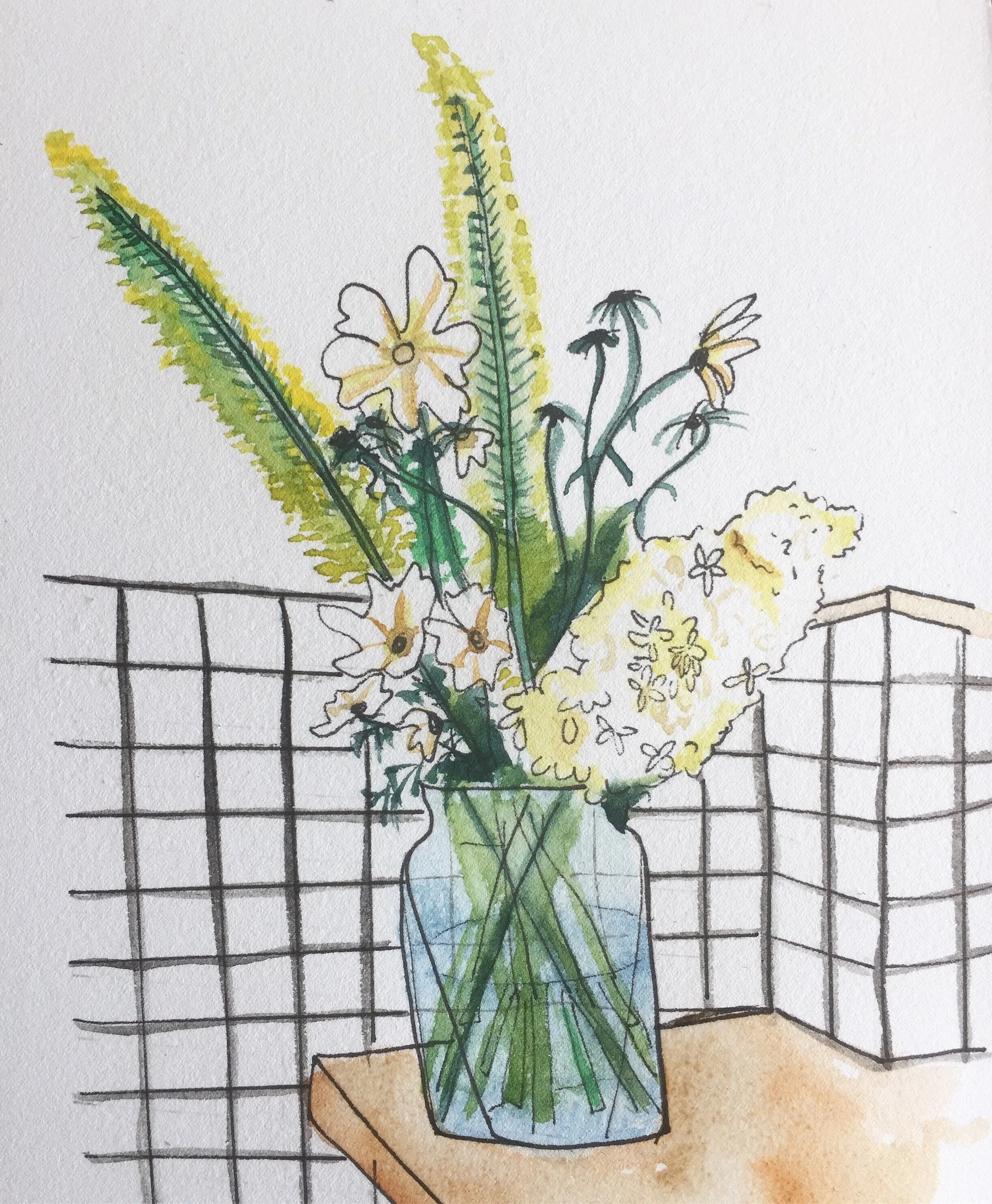CREATIVE CONVERSATIONS
Vrinda Manglik
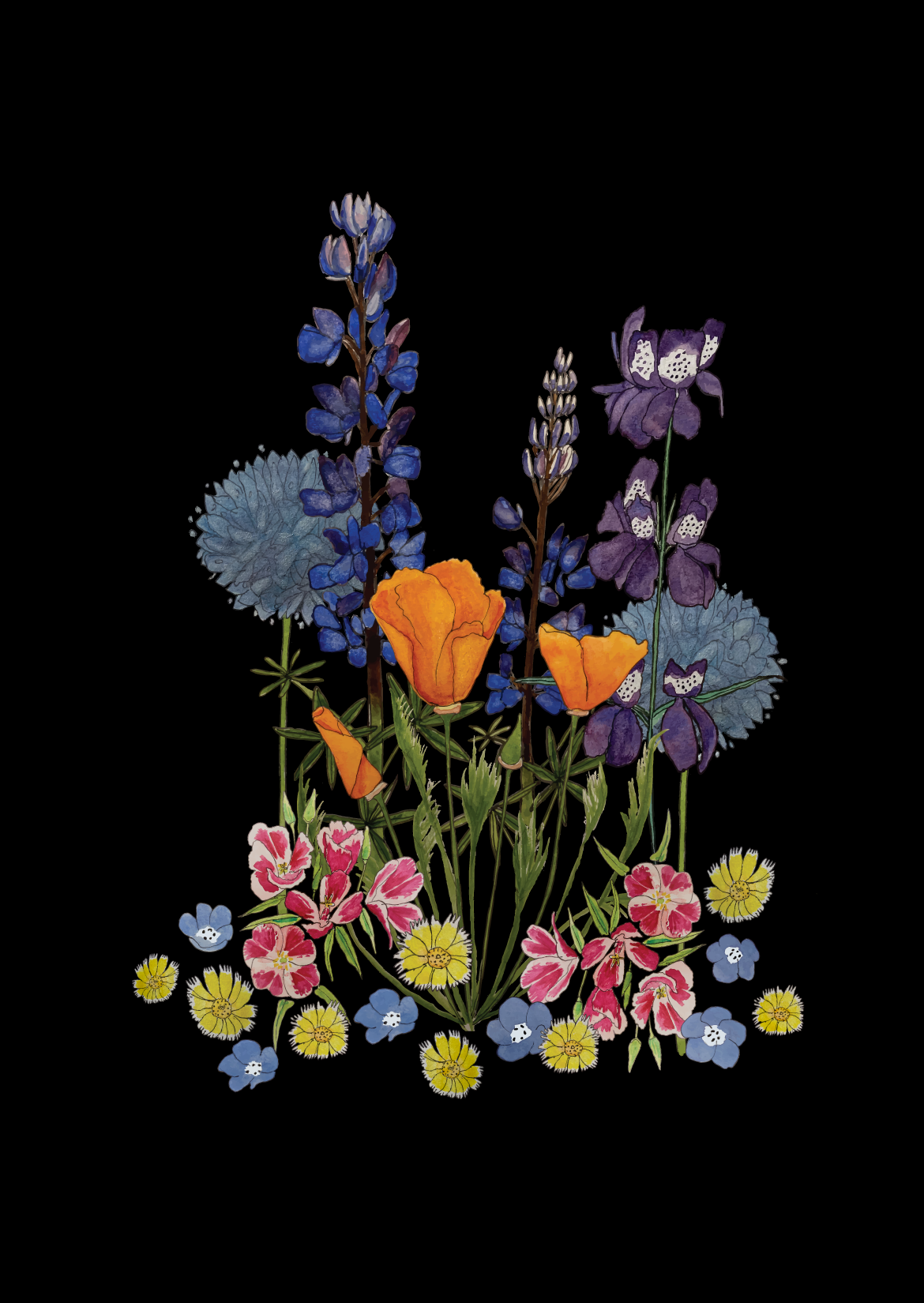
Vrinda Manglik
has spent most of her career working in environmental nonprofits and foundations, largely on issues related to climate change. She studied environmental studies in college and has a master’s in environmental management. She grew up in a mix of Connecticut, California, and Singapore, then spent another decade on the East Coast (outside of New York City, Washington DC, and Connecticut), Vrinda now lives in Oakland, California, where she’s been for almost a decade. Vrinda has created commissioned artwork for several environmental organizations and friends.
Where you can find Vrinda

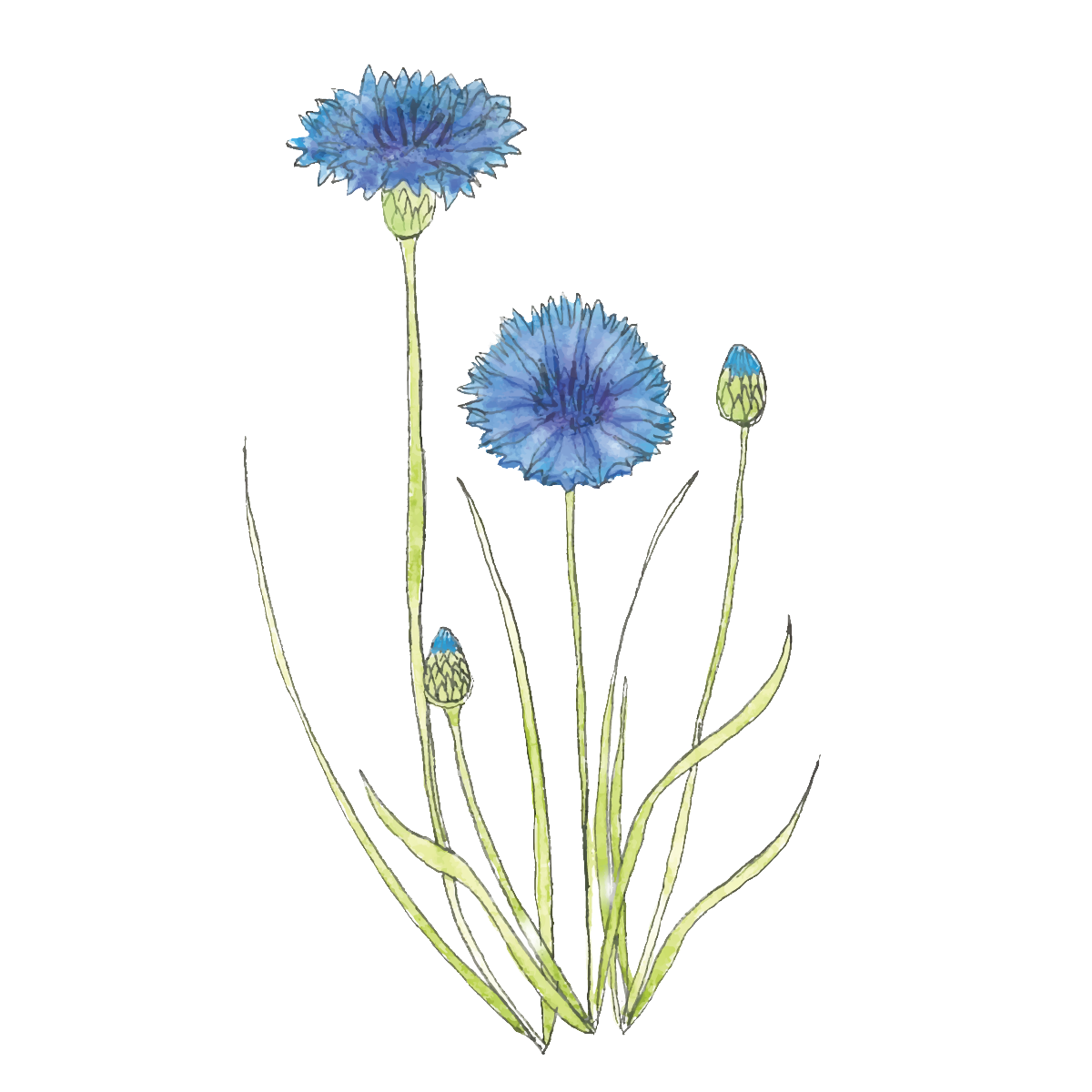
What’s your earliest memory involving flowers?
I have a lot of memories of the flowers in my childhood backyard in West Hartford, Connecticut, where I lived till I was 10. I remember planting flowers like tulips, hyacinths, pansies, impatiens, and chrysanthemums with my mom, and I also remember the flowers that would bloom in our yard every spring: fragrant lilacs, forsythias, a blossoming crabapple tree, rhododendrons, crocuses, and more.
I played outside a lot as a kid, including making potions from plants and cakes out of mud that I decorated with flowers. I also remember drawing some flowers in our yard in West Hartford, including once attempting to draw the crabapple tree in full bloom when I was about 9. At a certain point, I realized I was in over my head. I was trying to draw each individual blossom one at a time, and had a slightly worried moment of “wow, there are a lot of blossoms on this tree.” It would have taken a long time to finish that drawing!

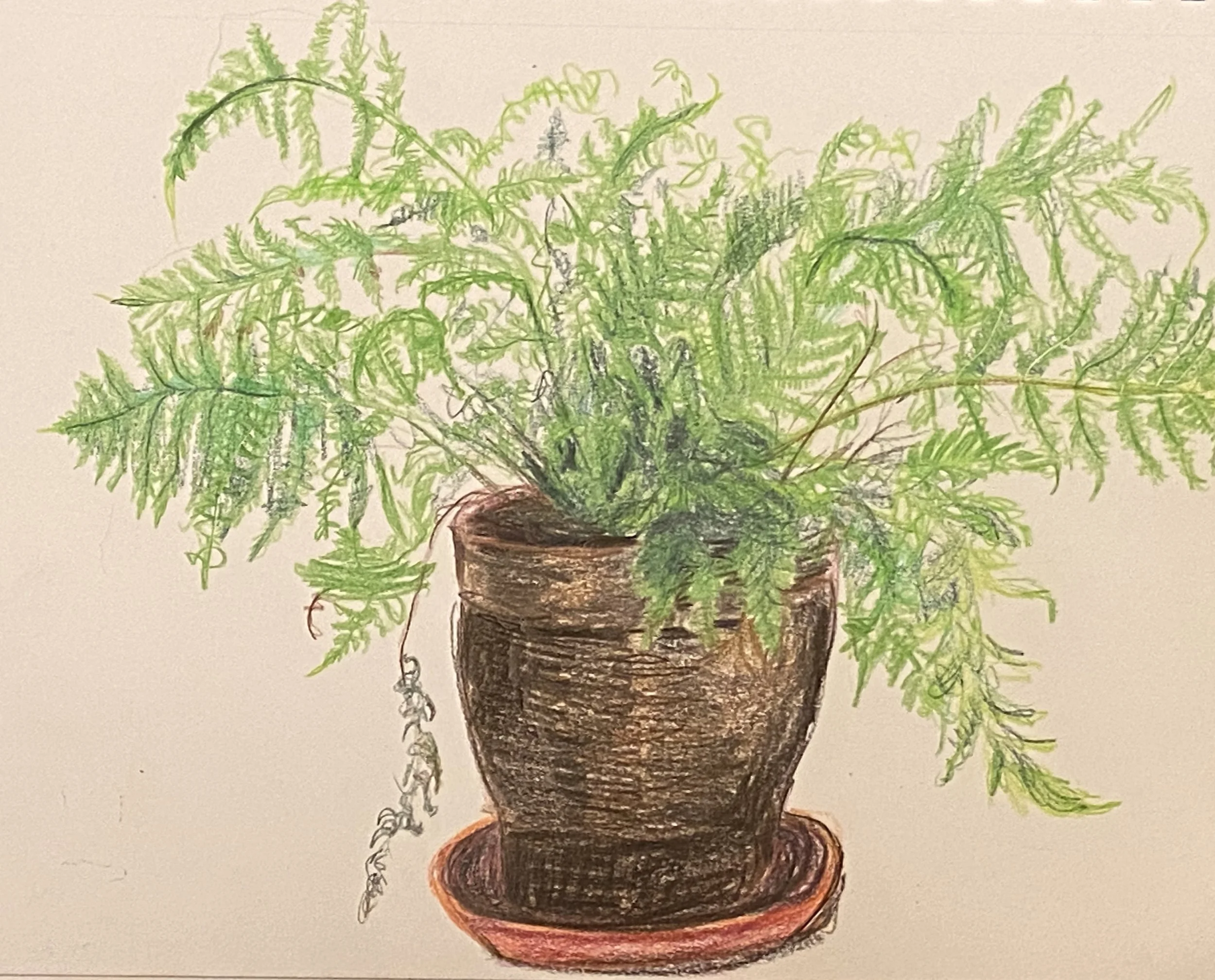
What were some of the major steps along the trajectory of your floral-related work?
I don’t have formal art training, but I’ve had long-standing interests in ecology and art, and these have sometimes intersected.
In the Bay Area, there’s a wonderful nature journaling community and in recent years I’ve gone on some outings led by John Muir Laws and Marley Peifer. Nature journaling involves recording observations through drawing, note-taking, and writing. It’s a great way to combine interests of being outdoors and drawing.
My love of ecology was partially cultivated through outdoor education experiences through elementary school in Connecticut and California, including a week I spent in the redwoods through a school trip in 5th grade. The week in the redwoods was a profound and inspiring experience for me, and I view it as a defining moment on my environmental journey.
Some of my botanical illustration is connected to plant identification, and is created for that context. A few key moments related to plant identification come to mind:
I lived in Singapore from the ages of 12 to 16, which has very different ecosystems than the places I’d lived before (Connecticut and California). This was sometimes incorporated into the curriculum. For example, Dr. Frazier, who was my 7th grade science teacher, led our class through some tropical plant identification in a forested patch of land on campus which was a lot of fun!
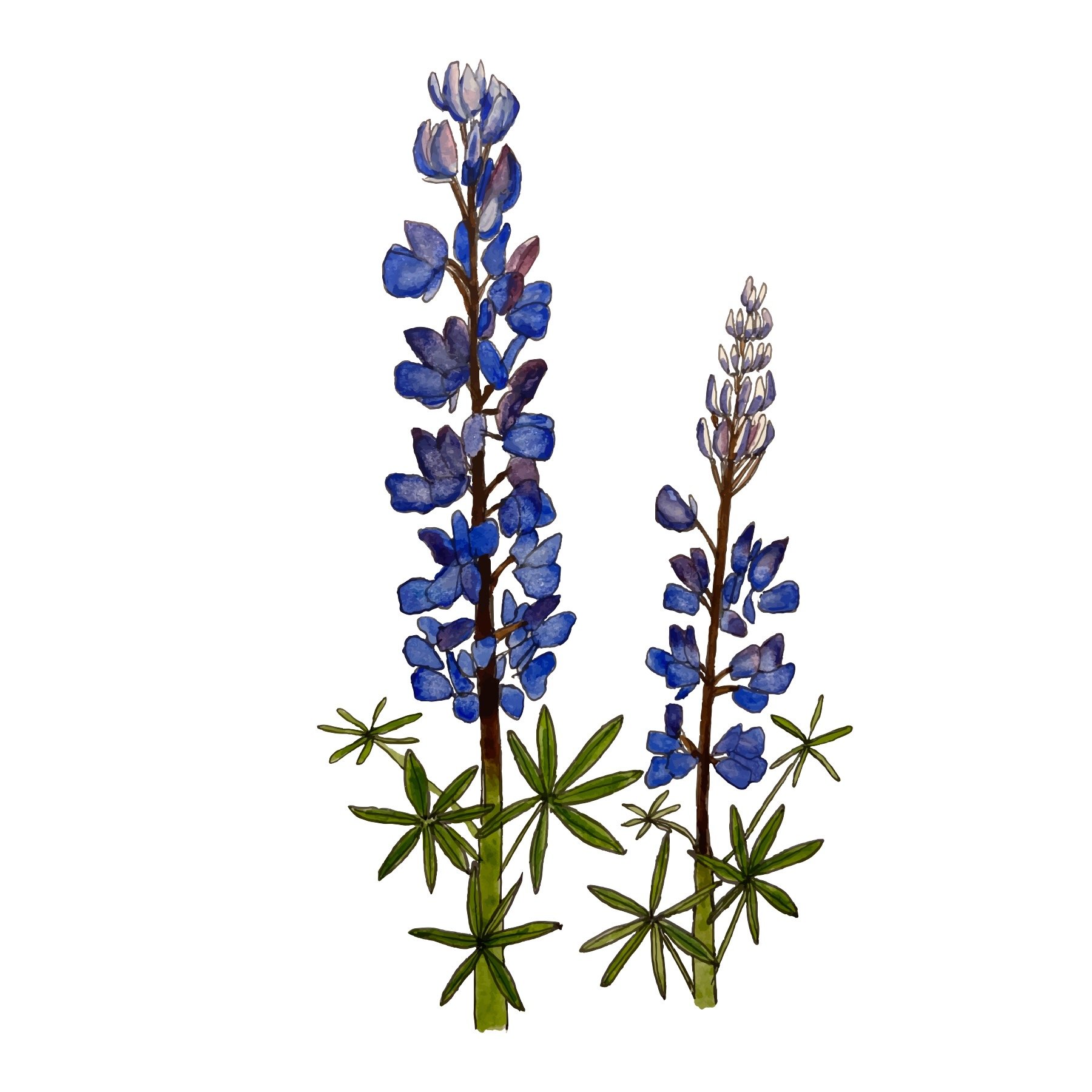

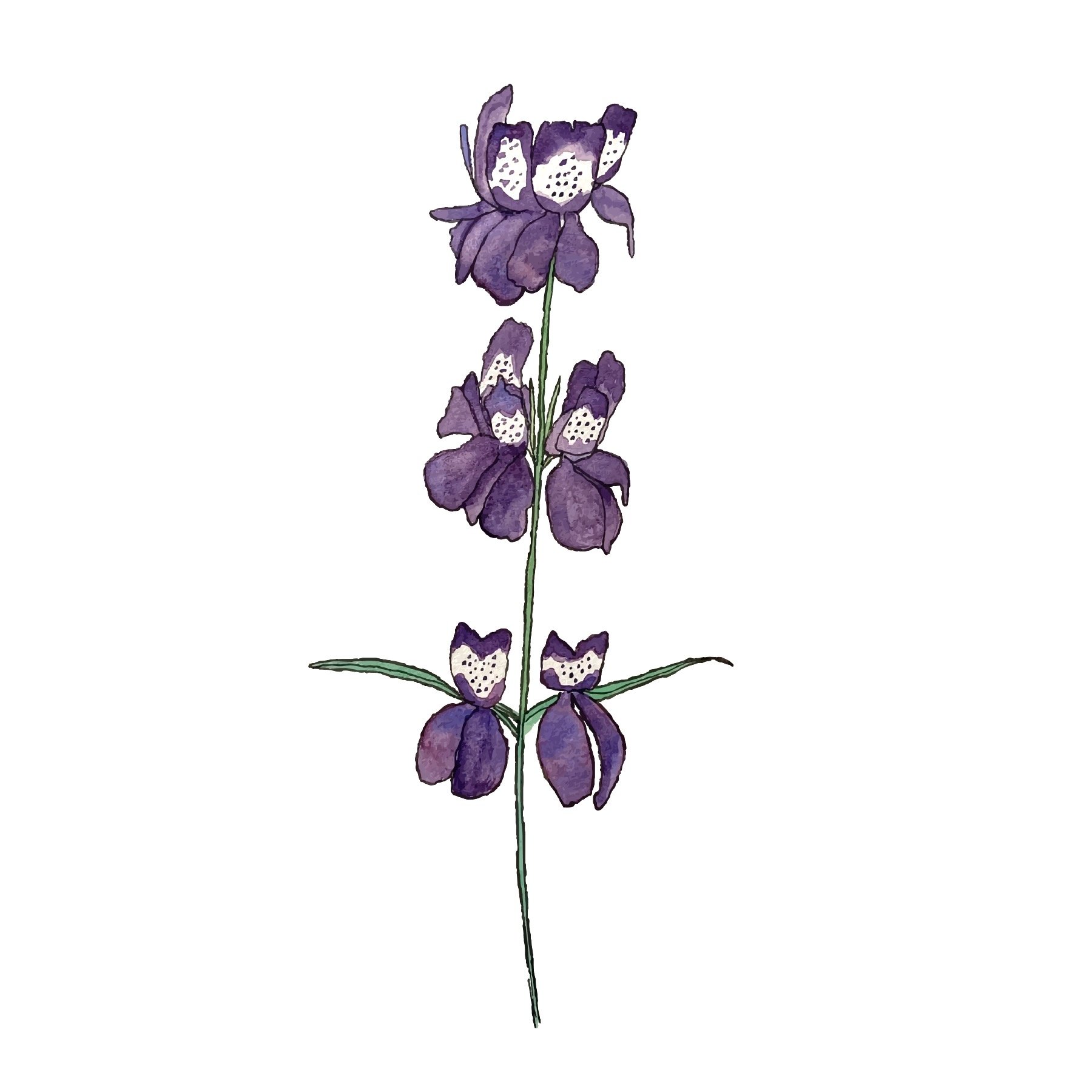

In my 9th grade biology class, also in Singapore, we had a taxonomy assignment through which I identified various tropical flowers like heliconia, spider lily, and frangipani (plumeria). It is fun to recognize some of these plants when I’m in the tropics or when I see pictures from the tropics. On the bus to school in Singapore, I would sometimes look out the window at all the vegetation and get ideas for illustrations: broad-leaved shrubs with elves using the leaves as umbrellas in the tropical downpours, the forms of dancers created by the limbs of trees. I’d draw these in my sketchbook.
I took some environmental science and ecology in high school in the Bay Area and then in college and graduate school in the Northeast, which included learning about plants, soils, and ecosystems.
I was really lucky to have a lot of educators over the years who were passionate about the natural world.
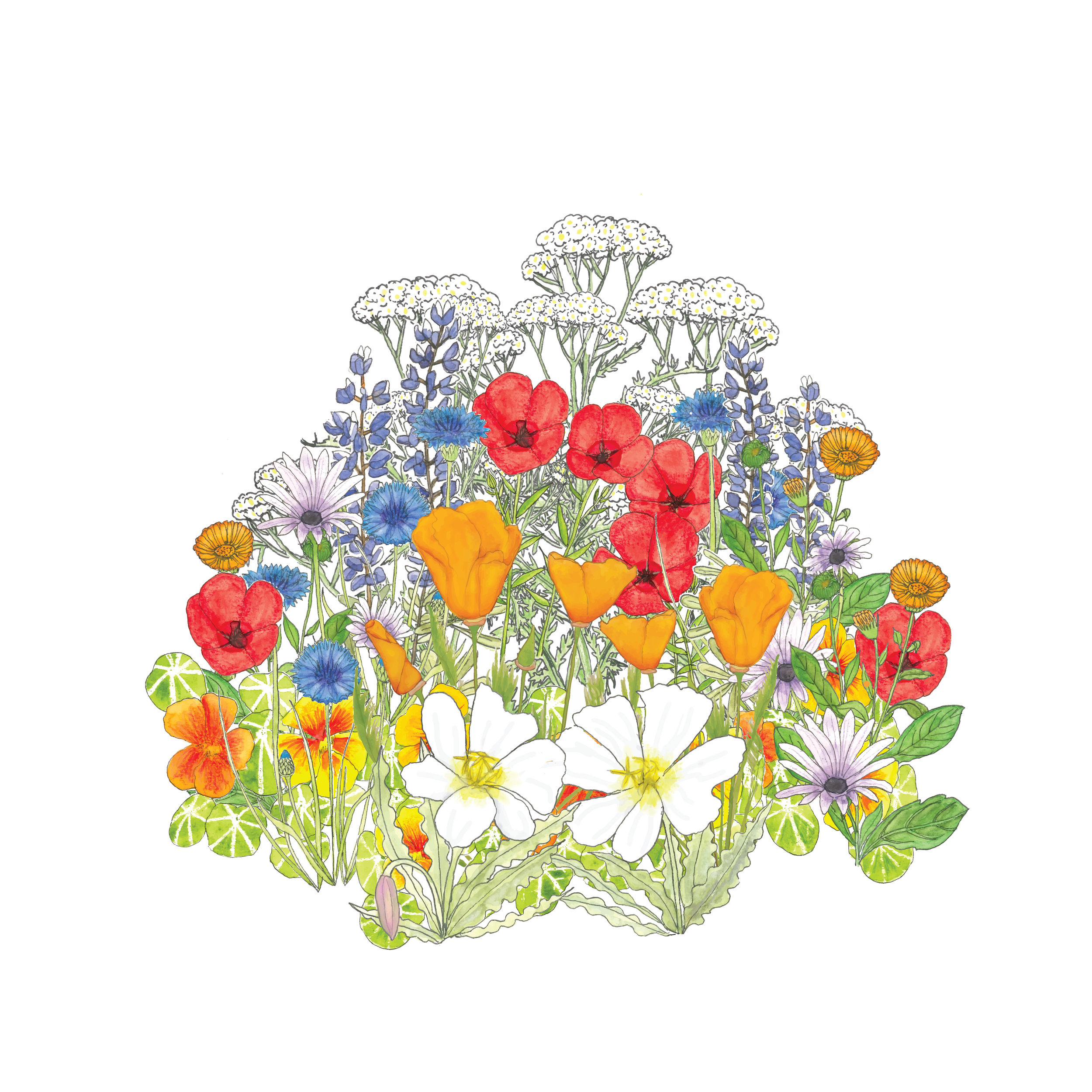
What role do flowers & nature play in your life?
I love being outside, including hiking and camping with friends. There’s a small group of friends that I often mark solstices and equinoxes with, and we like to mark the vernal equinox with a wildflower-studded hike. We’ve gone to Mt. Diablo a few times for that. I find hiking to be a great way to be fully engaged in an experience, to gain perspective, and to have a mental break from the apps and tabs and inboxes of modern life.
The natural world has a lot of wisdom we can learn from, including the cyclical nature of so many things: seasons, tides, phases of the moon, nutrient cycles, cycles of life, and death. Everything has a place: all elements and species, big or small, fit into the bigger picture and affect one another.
Spending time outdoors can offer a lot of healing. I think that’s one of the reasons it’s important to protect the planet from the very serious threats facing it: to protect these incredible sources of healing and spiritual medicine, with all the wisdom they hold and generously give.


How and when did you begin creating botanical-focused artwork?
I’ve pretty much always been interested in drawing plants and flowers. They are forgiving subjects!
In spring 2020, I was following some art exercises by the artist Sarah Mangle, and one was “paint your plants’ portraits.” This was a great stay-at-home activity for the early pandemic, and I ended up creating quite a few portraits of plants in my apartment.
In 2022, my friend Susan asked if I’d be willing to create the design for a wildflower seed packet that would be handed out as a party favor at her wedding. I posted the finished design to my social media, which led to another wedding-related flower art request from my friend Sarah. I created a design for their wildflower seed packet, as well as illustrations for plant and bird ID cards they gave to guests at their wedding weekend. Posting the finished work led to another request from a friend to design her wedding invitation this year with lots of flowers.




“Everything has a place:
all elements and species, big or
small, fit into the bigger picture
and affect one another.”

Can you share a bit about the flowers & botanicals in places you’ve lived?
There’s been such a variety! In the Northeast, I love the seasonal cycles of the deciduous trees — especially the beautiful fall colors. California is incredibly biodiverse, and of course I love all the redwoods and oaks and all the wildflowers that bloom here in the spring. I also love plants found in Singapore, where I lived, and in India, which I have visited many times.
What’s your process for creating your artwork?
My process for the commissioned flower designs I’ve created is typically a mix of paper and digital. I draw and paint the flowers on paper with pencil, pen, watercolor, and sometimes colored pencil. Then I digitize the drawings and edit and clean them up in Adobe Photoshop and Illustrator. I’m interested in branching out and exploring some different styles and techniques as well.
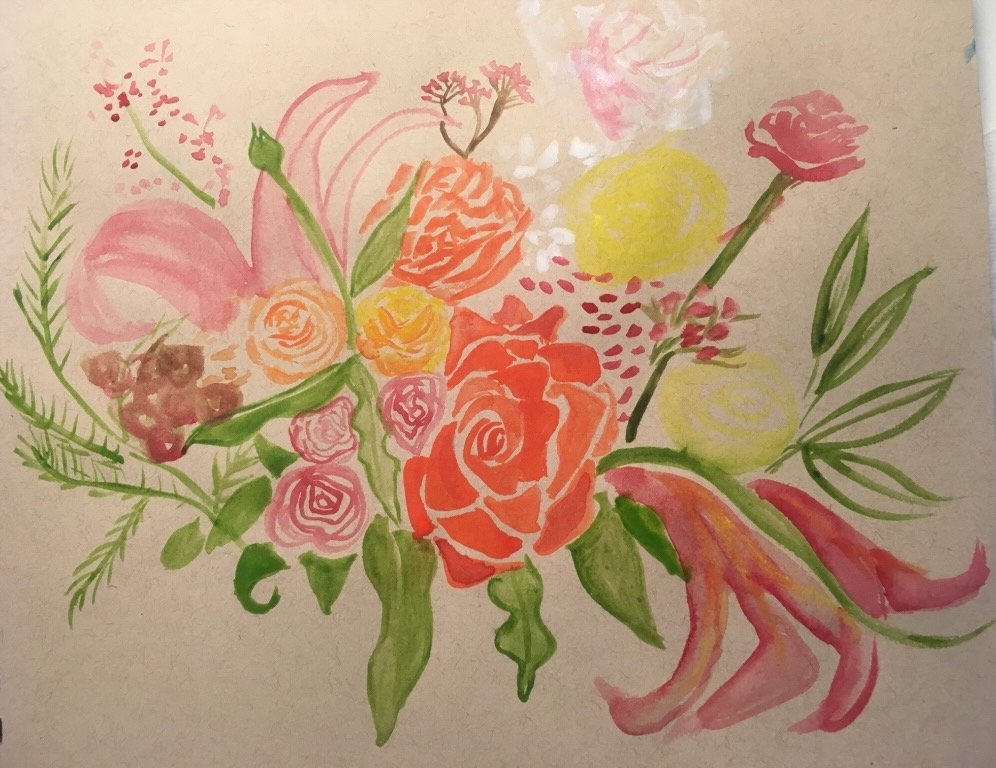

What ties do you see between your botanical artwork and your climate advocacy?
People protect what they love and what they have a relationship or positive association with. Botanical artwork helps foster connection with the natural world, both for the artist and the person looking at the art, and lifts up plants as deserving of attention and appreciation. This care can inspire people to engage with environmental protection and climate advocacy.
adrienne maree brown has said, “What you pay attention to grows.” You’re paying a lot of attention to a plant when you’re drawing it, whether from life or an image, as you’re studying and recording its structure, shape, and color. I find that having drawn a particular plant really helps me remember it and recognize it when I’m out on a hike. And drawing plants in general makes me notice plants more. I think pretty much the more attention we can pay to the natural world the better, and drawing is a great way of tuning in.
There’s so much we can learn from plants, and from Indigenous people with deep knowledge of and relationships with plants. These perspectives need to be included and valued in creating climate solutions and protecting people and the planet. For example, there is a lot of Indigenous knowledge around using fire as an important forest management tool and natural part of many landscapes.

What’s the best piece of advice you’ve been given that’s helped shape your work?
There are some wonderful books from the 1970s by the late Frederick Franck, including The Awakened Eye and The Zen of Seeing. He talks about seeing and drawing as a technique for contemplation and as a discipline of awareness. He emphasizes being true to what you really see when you’re drawing, not just drawing something the way you think it’s supposed to look.
I’ve heard this advice in the nature journaling context, too. I find that this practice of trying to see things as they really are leads to paying closer attention — and often more interesting drawings as a result.
Handpicked
A few of Vrinda’s favorites…

Favorite botanical gardens
I like spending time in botanical gardens in places I visit. Some memorable ones include Kew Gardens in London, the Santa Barbara Botanic Garden, the Singapore Botanic Gardens, and the beautiful botanical gardens we have in the Bay Area. I also love the water lilies and lotuses at the Kenilworth Aquatic Gardens in Washington, DC.
Current color obsession
I love purple and teal.
Recommended read
Robin Wall Kimmerer’s Braiding Sweetgrass: Indigenous Wisdom, Scientific Knowledge, and the Teachings of Plants is really amazing.
Thank you so much, Vrinda!
Art & image credits: Vrinda Manglik
You may also like…
More interviews with floral-inspired artists & designers who are blooming in creative directions
Artist - Chicago, Illinois
Artist & ceramicist - San Francisco, California
Pattern designer & illustrator - New York City
We respect your privacy, and when you click “Sign Up,” you are confirming that you agree that information you submit will be protected and used as permitted in our privacy policy and terms. If you do not agree to any of these terms, you may not submit this form.
We respect your privacy, and when you click “Sign Up,” you are confirming that you agree that information you submit will be protected and used as permitted in our privacy policy and terms. If you do not agree to any of these terms, you may not submit this form.



